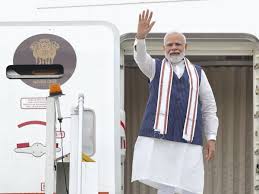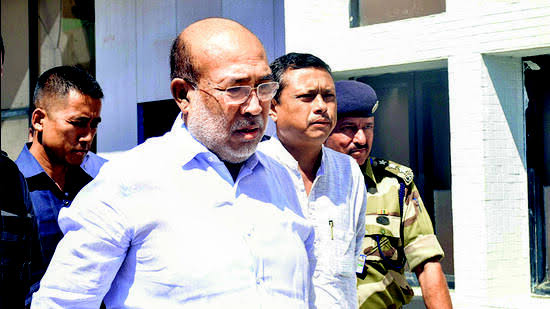Insurgents from Myanmar Civil War Worsen Manipur Ethnic Conflict
Summary of the News
Insurgents from Myanmar’s civil war have crossed into Manipur, India, intensifying the ongoing ethnic conflict between the Meitei and Kuki communities. Equipped with advanced weaponry and combat experience, these fighters have exacerbated violence, leading to increased casualties and displacement. In response, the Indian government has deployed additional troops to the region.
Understanding the Manipur Ethnic Conflict
Historical Context
Manipur, a northeastern state of India, has long been a melting pot of diverse ethnic groups, primarily the Meitei, who are predominantly Hindu and reside in the Imphal Valley, and the Kuki and Naga tribes, mainly Christians inhabiting the surrounding hills. Historically, these communities coexisted with occasional tensions, but recent events have escalated these into violent confrontations.
Recent Escalation
The current wave of violence began in May 2023, following a court order that suggested granting the Meitei community the same government benefits as the tribal groups. This proposal was met with resistance from the Kukis and Nagas, who feared economic and social marginalization. Protests soon spiraled into violent clashes, resulting in over 260 deaths and displacing more than 60,000 people.
The Myanmar Connection
Insurgents Crossing Borders
Myanmar’s civil war has created a volatile environment along its borders, particularly with India. Insurgent groups, seeking refuge and resources, have crossed into Manipur, bringing with them advanced weaponry and combat experience. These fighters have aligned with local factions, intensifying the existing ethnic conflict.
Impact on Local Dynamics
The influx of these insurgents has shifted the balance of power in Manipur. Their presence has led to an escalation in violence, with more sophisticated weapons being used in clashes. This development has further strained relations between the Meitei and Kuki communities, complicating efforts toward peace and reconciliation.
Government Response
Increased Military Presence
In response to the escalating violence, the Indian government has deployed an additional 10,000 soldiers to Manipur, bringing the total troop presence to nearly 67,000, alongside a 30,000-strong police force. This significant military buildup aims to restore order and prevent further insurgent infiltration.
Challenges in Implementation
Despite the increased security presence, challenges remain. The porous border with Myanmar makes it difficult to control insurgent movements effectively. Additionally, the complex ethnic landscape of Manipur requires a nuanced approach to avoid exacerbating tensions between communities.
Socio-Economic Implications
Displacement and Humanitarian Concerns
The conflict has led to significant displacement, with over 60,000 people forced to flee their homes. This displacement has created humanitarian challenges, including the need for shelter, food, and medical assistance for the affected populations.
Economic Disruption
The ongoing violence has disrupted local economies, particularly in agriculture and small-scale industries. The instability has deterred investment and hindered development projects, exacerbating poverty and unemployment in the region.
Path to Resolution
Dialogue and Reconciliation
Addressing the conflict requires open dialogue between the Meitei and Kuki communities. Establishing communication channels can help build trust and facilitate understanding, paving the way for reconciliation.
Strengthening Border Security
Enhancing security along the India-Myanmar border is crucial to prevent the influx of insurgents. This includes deploying advanced surveillance technology and increasing patrols to monitor and control cross-border movements effectively.
Inclusive Development
Promoting inclusive development that benefits all communities can address some of the underlying socio-economic disparities contributing to the conflict. Investing in education, healthcare, and infrastructure can improve living standards and reduce tensions.
Conclusion
The intersection of Myanmar’s civil war and Manipur’s ethnic conflict has created a complex and volatile situation. Addressing this challenge requires a multifaceted approach that includes enhancing security, fostering dialogue, and promoting inclusive development. Only through coordinated efforts can lasting peace and stability be achieved in the region.
FAQs
- What triggered the recent ethnic conflict in Manipur?
The conflict escalated in May 2023 after a court order suggested granting the Meitei community the same government benefits as the tribal groups, leading to protests and violent clashes. - How have insurgents from Myanmar influenced the conflict?
Insurgents crossing into Manipur from Myanmar have brought advanced weaponry and combat experience, intensifying the violence between local ethnic groups. - What measures has the Indian government taken to address the situation?
The government has deployed additional troops to Manipur, increasing the total military presence to nearly 67,000 soldiers, alongside a 30,000-strong police force, to restore order. - What are the humanitarian impacts of the conflict?
The violence has displaced over 60,000 people, leading to significant humanitarian challenges, including the need for shelter, food, and medical assistance. - What steps can be taken to resolve the conflict?
A multifaceted approach involving dialogue between communities, strengthening border security, and promoting inclusive development is essential for achieving lasting peace in the region.





